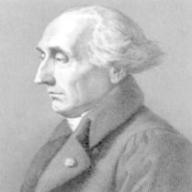為什麼開管(open pipe)也能形成駐波?
2010-12-30 5:57 pm
For an open pipe with both the ends open, a stationary wave can be set up by blowing across the upper open end of the pipe. Why?
回答 (1)
2010-12-30 7:46 pm
✔ 最佳答案
Basically, by blowing air across the mouth of a pipe, there is a pressure difference between the air in motion and the still air inside the pipe. As a result of pressure difference, an "air pulse' is produced.When a pulse of air, e.g. a compression, arrives down at the open end, its momentum carries it onto the open air, where it spreads out in all directions. Because it spreads out in all directions, its pressure falls very quickly to atmospheric pressure (the air outside is at atmospheric pressure). However, it still has momentum to travel away from the end of the pipe. Consequently, it creates a little suction: the air following behind it in the pipe is sucked out (this is somewhat like air is sucked behind a fast moving vehicle).
Now, a suction at the end of the pipe draws air from further up the pipe, and that in turn draws air from further up the pipe and so on. The result is that a pulse of high pressure air (compression) travels down the pipe is reflected as a pulse of low pressure air (rarefaction) travelling up the pipe. Hence, the pressure wave (compression) has been reflected at the open end, with a phase change of 180 degrees.
The web-page below gives a short account of wave reflection at open end. Just read the description under "Standing Wave Patterns of in Air Colums):
http://www.vias.org/physics/bk3_04_05_01b.html
收錄日期: 2021-04-29 17:38:32
原文連結 [永久失效]:
https://hk.answers.yahoo.com/question/index?qid=20101230000051KK00292

